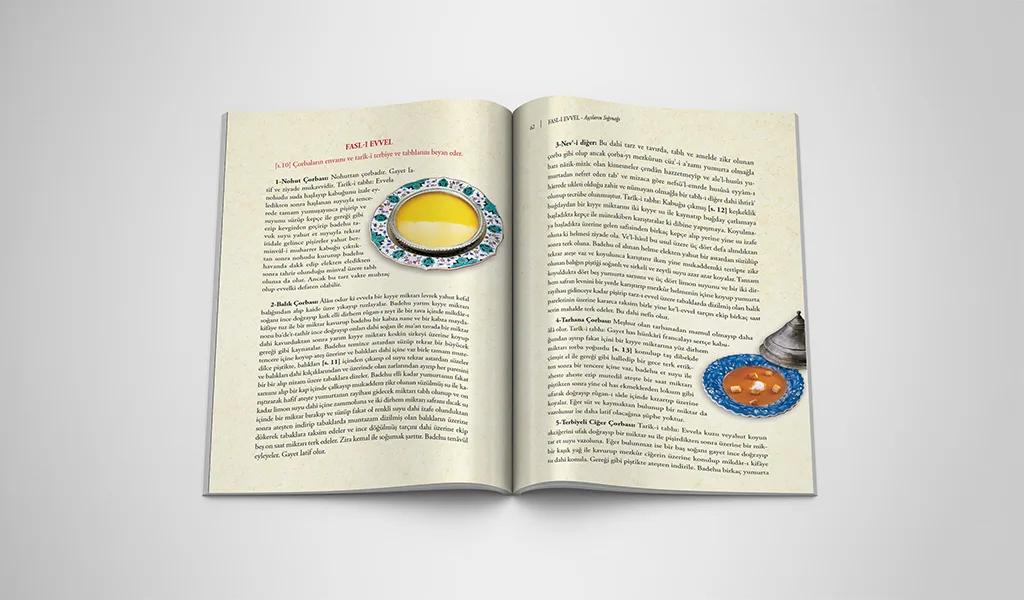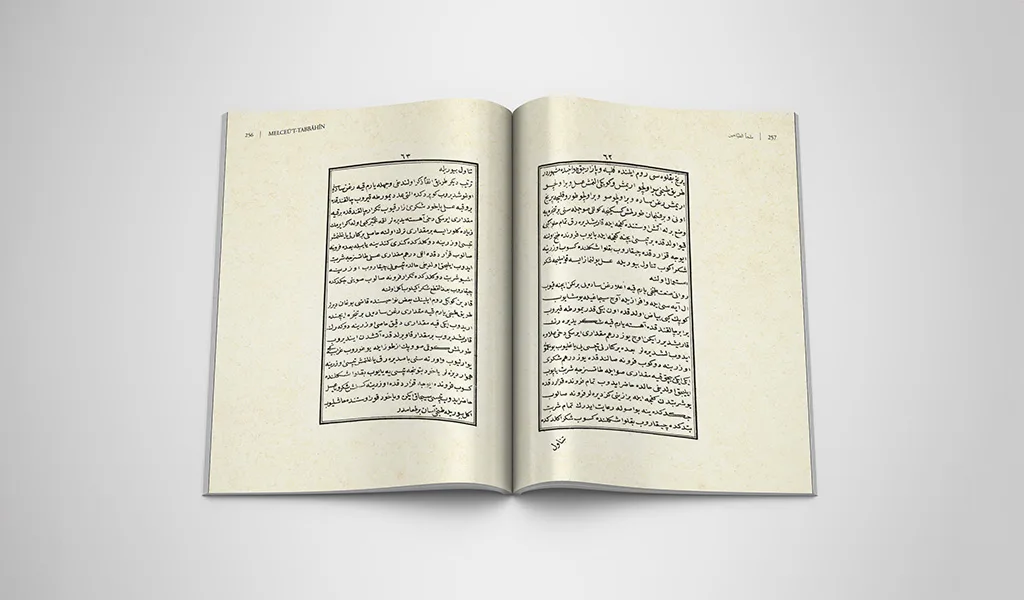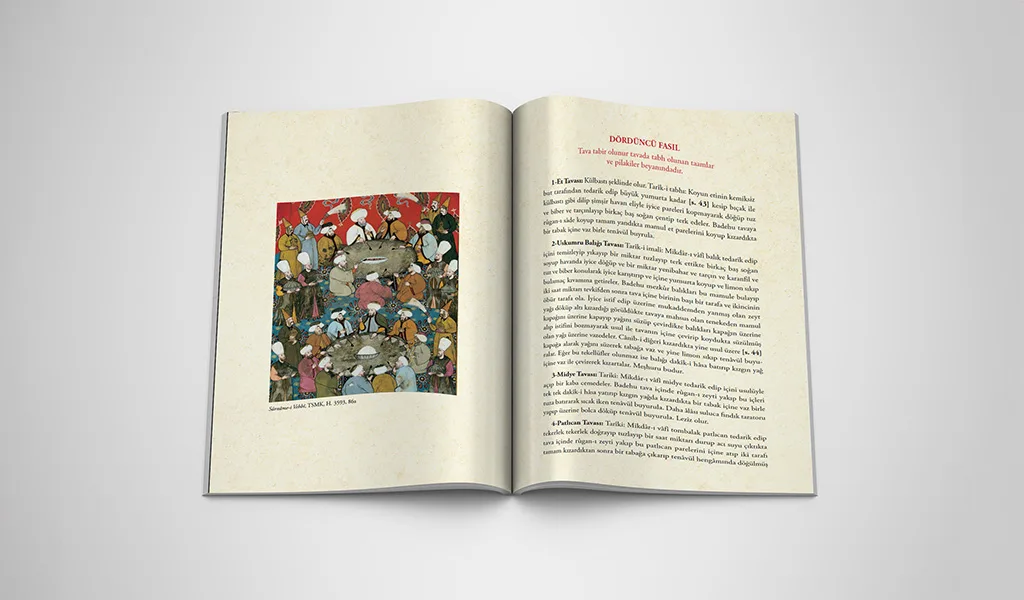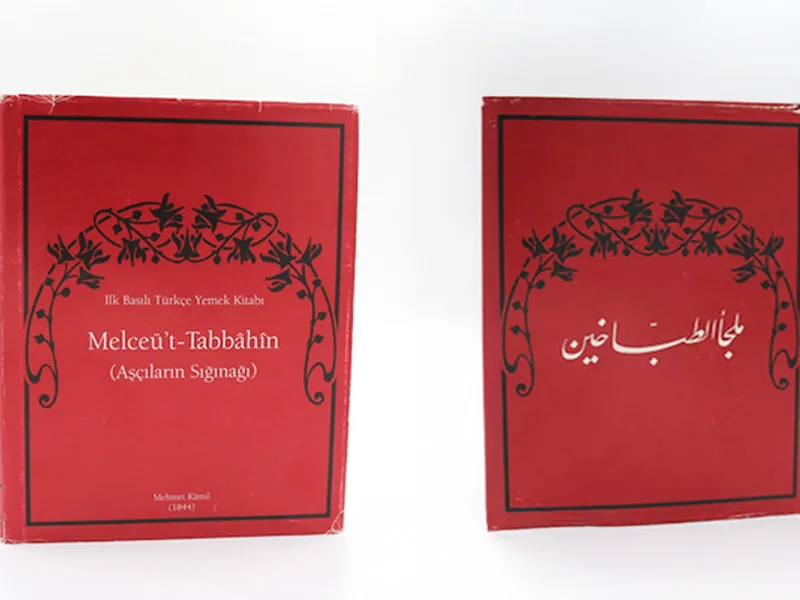Melceü’t-Tabbâhîn, one of the earliest written sources reflecting the richness and elegance of Ottoman culinary culture, is among the most valuable works in the history of Turkish cuisine. Written by Mehmed Kâmil in the mid-19th century, this work is not merely a cookbook; it is also an important source that describes the social life and culinary habits of the period. As a written record of the culinary culture in the Ottoman lands, Melceü’t-Tabbâhîn provides not only countless recipes from Ottoman and Turkish cuisine but also information on cooking and presentation traditions.

Mehmed Kâmil and the Publication of the First Cookbook
The first cookbook written by Mehmed Kâmil, one of the professors at Mekteb-i Tıbbiye-i Adliye-i Şahane, the first modern medical school in Turkey, was published as a lithographic print in 1844. Mehmed Kâmil, who made significant contributions to culinary culture, examined older recipe manuscripts and extracted rare and flavorful dishes, adding appetizers like salads, pickles, and tarator to his 12-chapter book. He named the work Melceü’t-Tabbâhîn, meaning “the refuge of cooks.” Additionally, the measurements used in the recipes were provided according to the old Ottoman system of weights and measures.

Classical and Contemporary Recipes in Melceü’t-Tabbâhîn
The book includes both classical and contemporary culinary recipes. Mehmed Kâmil carefully studied historical recipe manuscripts, compiling selected recipes from these sources while also incorporating his own tested recipes to enrich the content. Through this work, he aimed both to deepen knowledge of Ottoman culinary culture and to correct improper cooking techniques. Melceü’t-Tabbâhîn provides detailed information not only on recipes but also on Ottoman cooking methods, ingredients, and the preparation of dishes.

Chapter 1: Soups (Fasl-ı Evvel)
The first chapter, Fasl-ı Evvel, contains five different soup recipes: chickpea soup, fish soup, tarhana soup, liver soup with seasoning, and sour soup.
Chapter 2: Kebabs and Grilled Dishes
The second chapter presents various kebabs and grilled dishes, including lamb, mutton, and fish-based külbastı. This chapter contains 22 different kebab recipes.
Chapter 3: Stews, Meatballs, and Baked Meat Dishes
The third chapter consists of stews, meatballs, and baked meat dishes, featuring 31 recipes such as white stew, yaka stew, mackerel stew (papaz yahnisi), and parsley-stuffed meatballs.
Chapter 4: Pan-Cooked Recipes
The fourth chapter includes 11 pan-cooked recipes, with detailed instructions for meat, anchovy, and oyster dishes.
Chapter 5: Savory Pastries (Börek)
The fifth chapter contains 21 types of savory pastries (börek).
Chapter 6: Pastry and Dessert Recipes
The sixth chapter provides 44 different pastry and dessert recipes, including musanna kaymak baklava, kadın göbeği, kadife, oil-free kadayıf, fodula kadayıfı, sabuniye helvası, lamunya helvası, güllabiye, and cızlama.
Chapter 7: Milk-Based Desserts
The seventh chapter presents 15 milk-based dessert recipes, such as tavukgöğsü, elmasiye, süzme saray aşuresi, and güllaç paludesi.
Chapter 8: Bastı Desserts
The eighth chapter contains 26 types of bastı (pounded or pressed desserts), including pumpkin bastı, herîse, faux keşkek, eggplant kayganası, and assorted vegetable dishes (sebzevat).
Chapter 9: Stuffed Vegetables
The ninth chapter includes stuffed vegetables with olive oil or plain butter.
Chapter 10: Rice Dishes
The tenth chapter features rice dishes.
Chapter 11: Fruit Compotes (Hoşaf)
The eleventh chapter includes fruit compotes (hoşaf).
Chapter 12: Pre-Coffee Desserts
The final chapter presents desserts traditionally consumed before coffee.

Mehmed Kâmil’s Culinary Philosophy and Critique
In his book, Mehmed Kâmil Efendi critiques that the chefs of his time largely relied on old recipes and lacked skill in preparing new dishes. His concern over this limitation motivated him to write this work. The recipes in the book were designed for those who appreciate the subtleties and pleasures of food and value both taste and aesthetic quality. However, he emphasizes that the book is not essential for those living a simple daily life, content with basic meals, and lacking particular interest in this field. The work also addresses Islamic rules regarding food and how dishes should be prepared, making it not only a collection of recipes but also a broad exploration of the religious and social dimensions of culinary culture.

